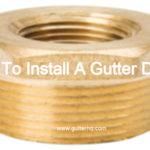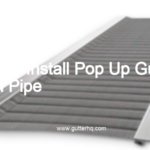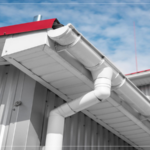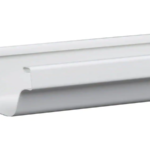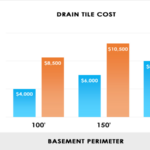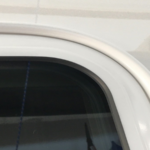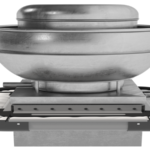- Begin by measuring the length of drain pipe needed and cut to size with a hacksaw.
- Next, clean out the gutter by removing any debris.
- Once the gutter is clean, fit the drain pipe into the gutter and seal the ends with silicone caulk.
- For added stability, you can drill holes through the drain pipe and into the gutter and screw the two together.
- Finally, test the drain pipe by running water through it to ensure it is draining properly.
Does a gutter downpipe have to go into a drain?
A gutter downpipe does not have to go into a drain, but it is often the most effective way to ensure that rainwater is properly drained away from your home. If your downpipe does not go into a drain, you may want to consider installing a French drain or a similar system to ensure that water is properly diverted away from your foundation.
How deep should I bury my gutter drain pipe?
It is recommended that you bury your gutter drain pipe at least 18 inches deep. This will ensure that the pipe is buried deep enough to avoid any potential damage from Lawnmowers or other yard equipment.
Can you install your own downpipe?
Most people believe that they can install their own downpipe, but this is not always the case. While it is true that many people have had success with this do-it-yourself project, it is important to remember that there are a few key considerations that must be taken into account before attempting to install a downpipe.
First and foremost, it is important to make sure that the downpipe is the correct size for the opening in the gutter. If the downpipe is too small, it will not be able to catch all of the water from the gutter, and if it is too large, it will not fit properly and could cause problems.
Another important consideration is the type of material the downpipe is made from. There are two main types of downpipes – plastic and metal. Plastic downpipes are less expensive and easier to install, but they are not as durable as metal downpipes and may need to be replaced more frequently. Metal downpipes are more expensive, but they are more durable and will last longer.
Finally, it is important to make sure that the downpipe is installed properly. This means that it should be level and should slope slightly downwards so that water can drain properly. If the downpipe is not installed properly, it could cause water to back up into the gutter or even into the house.
Can you run a condensate pipe into a gutter?
Yes, you can run a condensate pipe into a gutter. This is a common way to collect and drain water from air conditioners and other HVAC equipment. The water that condenses on the coils of your air conditioner is typically collected in a pan and then drained through a pipe. If you have a gutter system, you can tie the condensate pipe into the gutter so that the water is collected and drained away from your home. This can help to prevent water damage and staining on your home’s exterior.
Can downpipe go straight into ground?
A downpipe is a pipe that is used to carry water from the gutter of a building to the drains. The water that is collected in the gutter is usually carried away by the downpipe. The downpipe can be made of different materials, such as PVC, metal, or concrete. The most common material for the downpipe is PVC.
The downpipe can go straight into the ground, but it is usually connected to a drain pipe. The drain pipe is used to carry the water away from the building. The drain pipe can be made of different materials, such as PVC, metal, or concrete. The most common material for the drain pipe is PVC.
What is a good rule of thumb for installing drainage?
There is no one definitive answer to this question as there are a number of factors to consider, but a good rule of thumb is to make sure that your drainage is installed at least 6 inches below the ground level. This will ensure that it is able to catch and redirect any water that may collect on the surface. Additionally, it is important to make sure that your drainage system is installed in an area that is not prone to flooding or waterlogging.
What is the best pipe to use for gutter drainage?
There are a few factors to consider when choosing a pipe for gutter drainage. The most important factor is the diameter of the pipe. The larger the diameter, the more water the pipe can handle. Another factor to consider is the material the pipe is made from. PVC pipes are a popular choice for gutter drainage because they are durable and easy to install. However, metal pipes are also a good option and can handle more water than PVC pipes.
Final Word
If you need to install a drain pipe to your gutter, there are a few things you need to keep in mind. First, make sure you have the right tools for the job. You’ll need a hacksaw, a drill, and a few other things. Second, measure twice and cut once. You don’t want to make a mistake and have to start over. Third, take your time. This is not a race. If you rush, you may make a mistake. fourth, when in doubt, ask for help. There are plenty of resources available online and in your local hardware store. Finally, have fun. This is a project you can do yourself and it’s a great way to save money.



